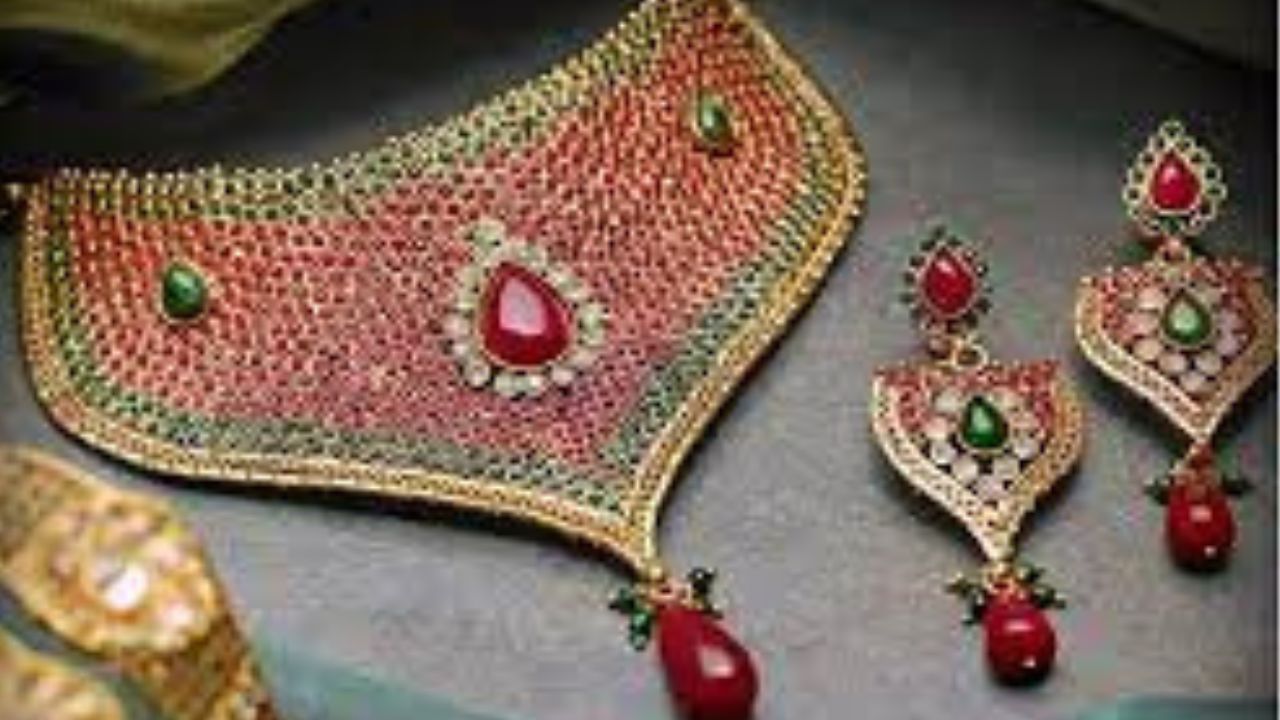Significance Of Indian Jewelry

Indian jewelry holds immense cultural, social, and aesthetic significance in Indian society. It plays a multifaceted role, encompassing historical, religious, social, and personal dimensions. Here are some key aspects of the significance of Indian jewelry:
- Cultural Heritage: Indian jewelry has a rich and ancient history, dating back thousands of years. It reflects the country’s diverse cultural traditions, with each region having its unique styles and techniques. These traditions are passed down through generations, preserving India’s cultural heritage.
- Religious Significance: Jewelry is an integral part of religious ceremonies and rituals in India. Many Indian religions and traditions incorporate jewelry as offerings to deities or as symbols of devotion. For example, Hindus often offer gold jewelry to gods and goddesses, and brides wear specific jewelry pieces for their wedding ceremonies.
- Social Status: In Indian society, the type and amount of jewelry one wears often signify social status, wealth, and prestige. Owning and displaying ornate jewelry can be a status symbol, especially during weddings and special occasions. The quantity and quality of jewelry can also indicate a family’s prosperity.
- Adornment and Beauty: Indian jewelry is celebrated for its intricate designs, vibrant colors, and exquisite craftsmanship. It enhances a person’s beauty and complements traditional attire. Jewelry is worn not just for special occasions but also as everyday adornment, adding elegance and charm to daily life.
- Bridal Tradition: Indian weddings are lavish affairs with elaborate ceremonies. Bridal jewelry, including necklaces, earrings, bangles, and nose rings, holds immense importance. Each piece has its significance, and they are often family heirlooms passed down through generations.
- Talismanic and Protective: Some Indian jewelry items, such as amulets and talismans, are believed to provide protection and ward off negative energies. Gemstones and specific designs are chosen for their supposed spiritual and healing properties.
- Economic Investment: Jewelry, particularly gold, is considered a reliable investment in India. People often invest in gold jewelry as a form of savings and security against economic uncertainty. It can be easily liquidated in times of need.
- Ceremonial Gifting: Gifting jewelry is a common practice during special occasions like weddings, birthdays, and festivals. It symbolizes love, respect, and blessings. Heirloom jewelry pieces are often passed down as cherished family gifts.
- Artistic Expression: Jewelry-making in India is an art form that involves skilled craftsmanship, intricate designs, and attention to detail. Many contemporary jewelry designers incorporate traditional techniques into modern pieces, creating a fusion of art and culture.
- Symbolism and Tradition: Different types of jewelry have specific cultural and regional significance. For example, the mangalsutra (a black and gold necklace) is a symbol of marital status in many parts of India. Toe rings are worn by married women, and the significance of specific gemstones varies across regions.
In conclusion, Indian jewelry is not merely decorative but a reflection of India’s rich history, diverse culture, and deep-rooted traditions. It serves various purposes, from symbolizing religious devotion to showcasing social status and enhancing personal beauty, making it an integral part of Indian life and identity.
Specific Content Keywords : Indian jewelry,Traditional Indian jewelry,Cultural significance of Indian jewelry,Symbolism in Indian jewelry,Historical Indian jewelry,Religious significance of Indian jewelry,Bridal jewelry in India,Gold jewelry in Indian culture,Gemstone jewelry in India,Regional variations in Indian jewelry,Indian jewelry craftsmanship,Indian jewelry traditions,Tribal jewelry in India,Filigree work in Indian jewelry,Kundan jewelry,Temple jewelry in India,Jewelry in Indian weddings,Spiritual significance of Indian jewelry,Antique Indian jewelry,Contemporary Indian jewelry,Royal jewelry of India,Preservation of Indian jewelry traditions,Indian jewelry as an art form,Indian jewelry in dance and theater,Indian jewelry as an investment.

